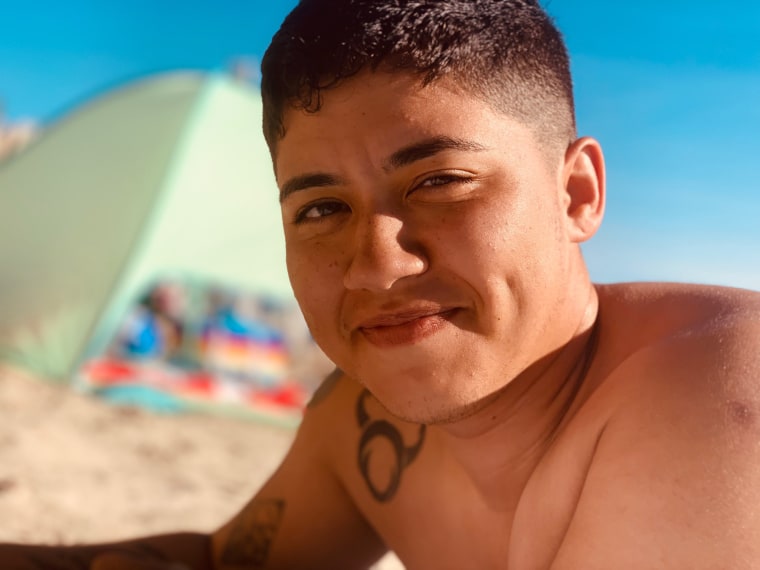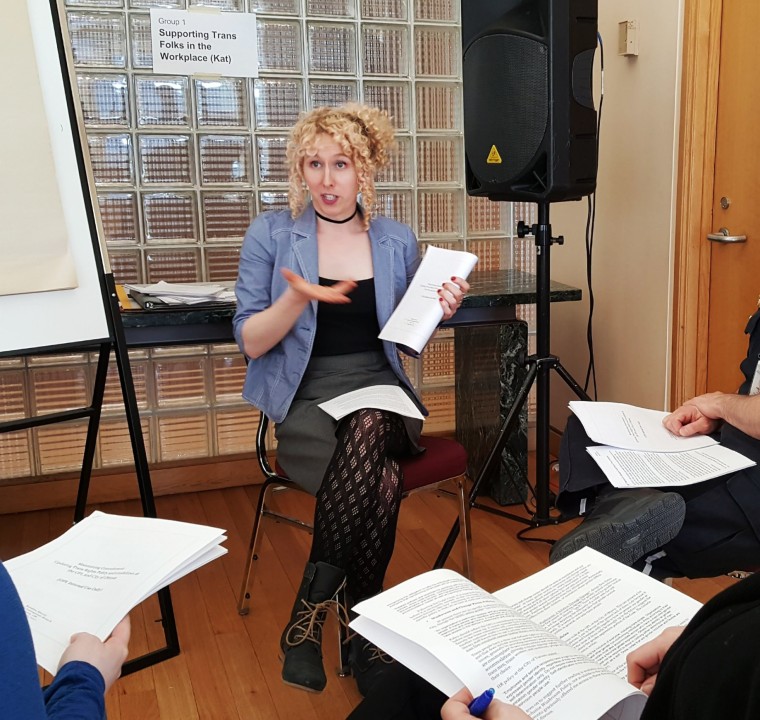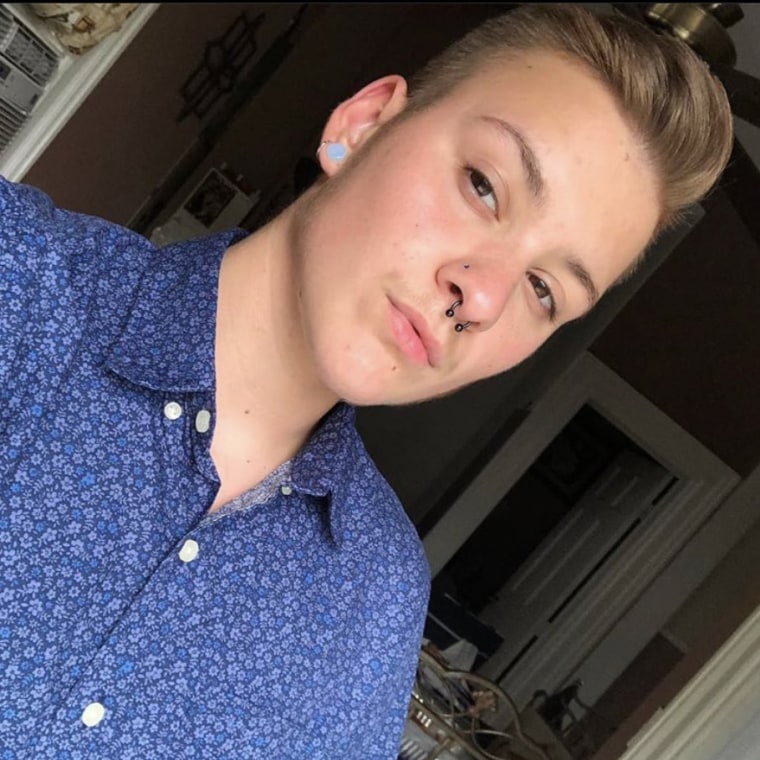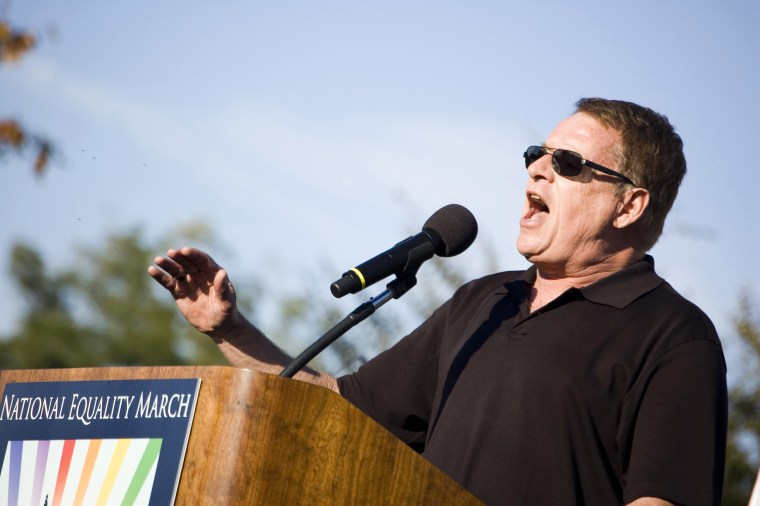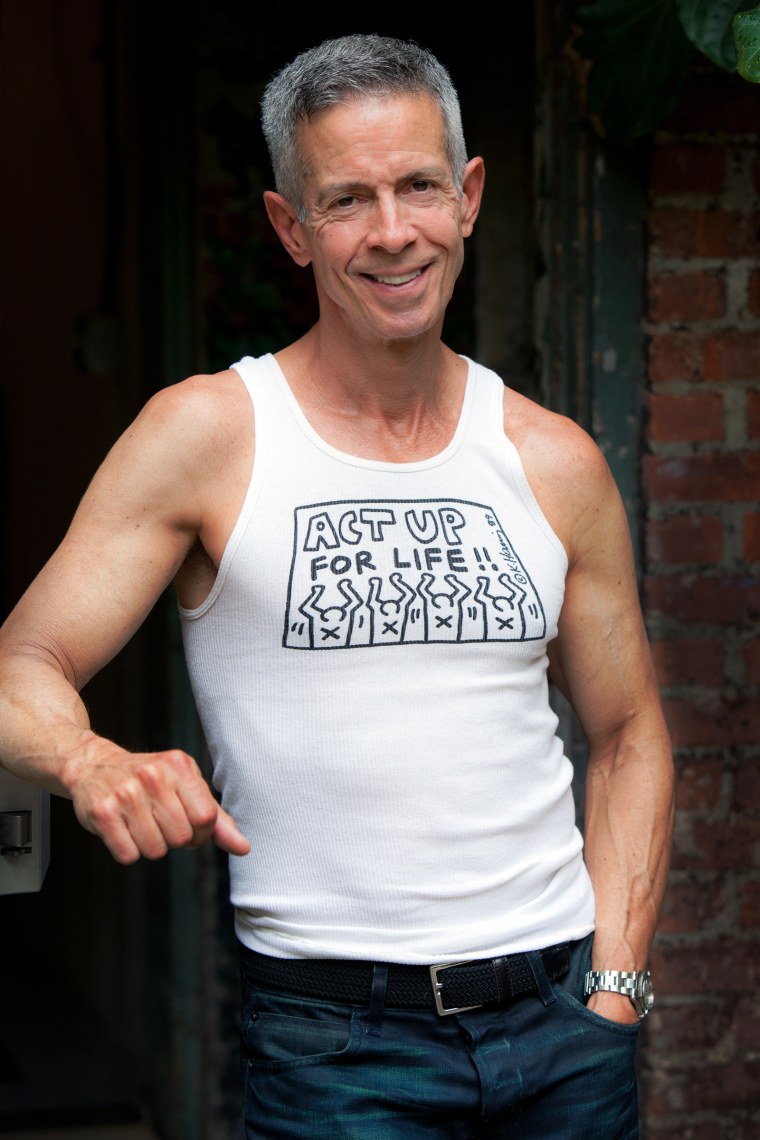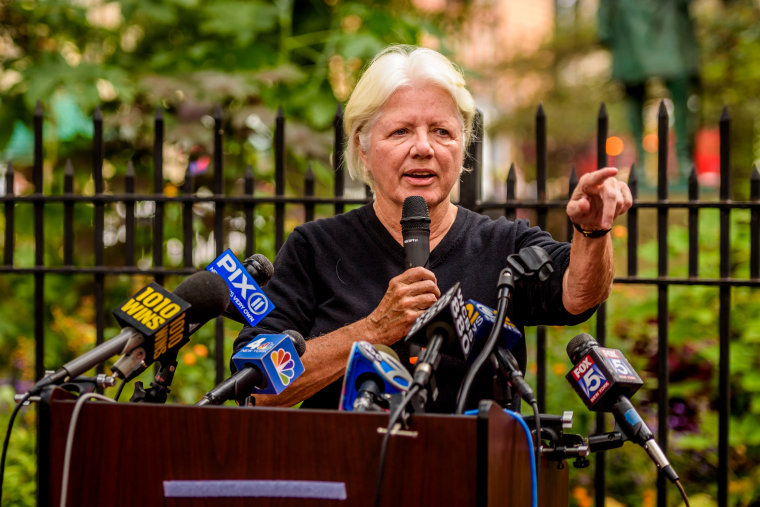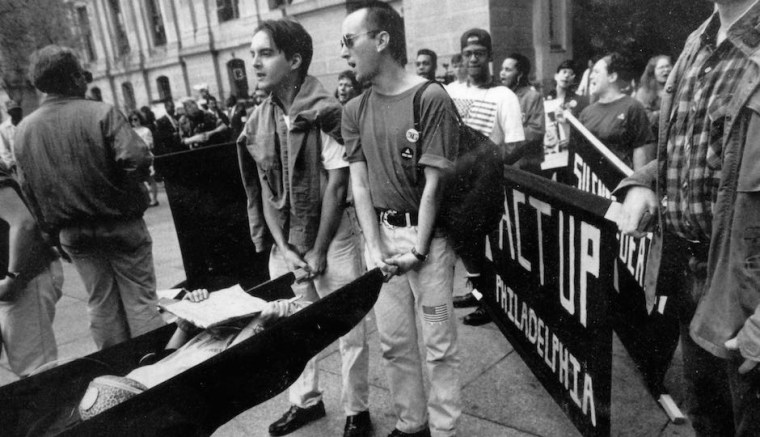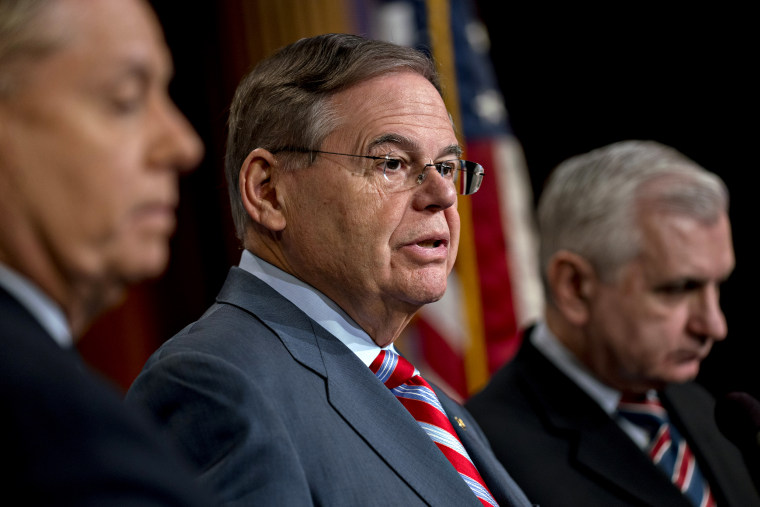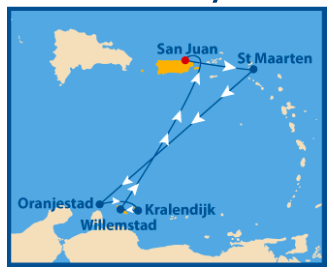A year after the “London Patient” was introduced to the world as only the second person to be cured of HIV, he is stepping out of the shadows to reveal his identity: He is Adam Castillejo.
Six feet tall and sturdy, with long, dark hair and an easy smile, Castillejo, 40, exudes good health and cheer. But his journey to the cure has been arduous and agonizing, involving nearly a decade of grueling treatments and moments of pure despair. He wrestled with whether and when to go public, given the attention and scrutiny that might follow. Ultimately, he said, he realized that his story carried a powerful message of optimism.
“This is a unique position to be in, a unique and very humbling position,” he said. “I want to be an ambassador of hope.”
Last March, scientists announced that Castillejo, then identified only as the “London Patient,” had been cured of HIV after receiving a bone-marrow transplant for his lymphoma. The donor carried a mutation that impeded the ability of HIV to enter cells, so the transplant essentially replaced Castillejo’s immune system with one resistant to the virus. The approach, though effective in his case, was intended to cure his cancer and is not a practical option for the widespread curing of HIV because of the risks involved.
Only one other individual with HIV — Timothy Ray Brown, the so-called Berlin Patient, in 2008 — has been successfully cured, and there have been many failed attempts. In fact, Castillejo’s doctors could not be sure last spring that he was truly rid of HIV, and they tiptoed around the word “cure,” instead referring to it as a “remission.”
Still, the news grabbed the world’s attention, even that of President Donald Trump.
And by confirming that a cure is possible, it galvanized researchers.
“It’s really important that it wasn’t a one-off; it wasn’t a fluke,” said Richard Jefferys, a director at Treatment Action Group, an advocacy organization. “That’s been an important step for the field.”
For Castillejo, the experience was surreal. He watched as millions of people reacted to the news of his cure and speculated about his identity. “I was watching TV, and it’s, like, ‘OK, they’re talking about me,’ ” he said. “It was very strange, a very weird place to be.” But he remained resolute in his decision to remain private until a few weeks ago.
For one, his doctors are more certain now that he is virus-free. “We think this is a cure now because it’s been another year, and we’ve done a few more tests,” said his virologist, Dr. Ravindra Gupta of the University of Cambridge.
Castillejo also tested his own readiness in small ways. He set up a separate email address and telephone number for his life as “LP,” as he refers to himself, and opened a Twitter account. He began talking weekly with Brown, the only other person who could truly understand what he had been through. In December, Castillejo prepared a statement to be read aloud by a producer on BBC Radio 4.
After talking through his decision with his doctors, friends and mother, he decided the time was right to tell his story.
“I don’t want people to think, ‘Oh, you’ve been chosen,’ ” he said. “No, it just happened. I was in the right place, probably at the right time, when it happened.”
Castillejo grew up in Caracas, Venezuela. His father was of Spanish and Dutch descent — which later turned out to be crucial — and served as a pilot for an ecotourism company. Castillejo speaks reverently of his father, who died 20 years ago, and bears a strong resemblance to him. But his parents divorced when he was young, so he was primarily raised by his industrious mother, who now lives in London with him. “She taught me to be the best I could be, no matter what,” he said.
As a young man, Castillejo made his way first to Copenhagen and then to London in 2002. He was found to have HIV, the virus that causes AIDS, in 2003.
“I do recall when the person told me and the panic set in,” he said. At the time, an HIV diagnosis was often seen as a death sentence, and Castillejo was only 23. “It was a very terrifying and traumatic experience to go through.”
With the support of his partner at the time, Castillejo persevered. He turned the passion for cooking he had inherited from his grandmother into a job as a sous chef at a fashionable fusion restaurant. He adopted an unfailingly healthy lifestyle: He ate well, exercised often, went cycling, running and swimming.
Then, in 2011, came the second blow. Castillejo was in New York City, visiting friends and brunching on the Upper East Side, when a nurse from the clinic where he went for regular checkups called him. “Where are you?” she asked. When Castillejo told her, she would say only that they had some concerns about his health and that he should come in for more tests when he returned to London.
RELATED STORIES
He had been experiencing fevers, and the tests showed that they were the result of a Stage 4 lymphoma. “I will never forget my reaction as once again my world changed forever,” he said. “Once again, another death sentence.”
Years of harsh chemotherapy followed. Castillejo’s HIV status complicated matters. Each time his oncologists adjusted his cancer treatment, the infectious-disease doctors had to recalibrate his HIV medications, said Dr. Simon Edwards, who acted as a liaison between the two teams.
There is little information about how to treat people with both diseases, and HIV-positive people are not allowed to enter clinical trials. So with each new chemotherapy combination, Castillejo’s doctors were venturing further into unchartered territory, Edwards said.
With each treatment that seemed to work and then didn’t, Castillejo fell into a deeper low. He saw fellow patients at the clinic die and others get better, while he kept returning, his body weakening with each round.
“I was struggling mentally,” he said. “I try to look at the bright side, but the brightness was fading.”
In late 2014, the extreme physical and emotional toll of the past few years caught up to Castillejo, and two weeks before that Christmas he disappeared. His friends and family imagined the worst and filed a missing person’s report. Castillejo turned up four days later outside London, with no memory of how he had ended up there or what he had done in the interim. He described it as “switching off” from his life.
Around that same time, he said, he felt so defeated that he also contemplated going to Dignitas, the Swiss company that helps terminally ill people take their own lives: “I felt powerless. I needed control, to end my life on my own terms.” He made it through that dark period and emerged with a determination to spend whatever was left of his life fighting.
Still, in the spring of 2015, his doctors told him he would not live to see Christmas. A bone-marrow transplant from a donor is sometimes offered to people with lymphoma who have exhausted their other options, but Castillejo’s doctors did not have the expertise to try that, especially for someone with HIV.
His close friend, Peter, was not ready to give up, and together they searched online for alternatives. (Peter declined to reveal his last name because of privacy concerns.) They discovered that at a hospital in London was Dr. Ian Gabriel, an expert in bone-marrow transplants for treating cancer, including in people with HIV. Because of their last-ditch effort, Castillejo said, “We’re here today. You never, never know.”
Within a week, he met with Gabriel, who tried a third and final time to tap Castillejo’s own stem cells for a transplant. When that failed, Gabriel explained that Castillejo’s Latin background might complicate the search for a bone-marrow donor who matched the genetic profile of his immune system. To everyone’s surprise, however, Castillejo quickly matched with several donors, including a German one — perhaps a legacy from his half-Dutch father — who carried a crucial mutation called delta 32 that hinders HIV infection. A transplant from this donor offered the tantalizing possibility of curing both Castillejo’s cancer and the HIV.
When Gabriel called with the news in the fall of 2015, Castillejo was on the top deck of one of London’s iconic red buses, on his way to see his general practitioner for a checkup. His thoughts raced alongside the scenery: He had only recently been told he was going to die, and now he was being told he might be cured of both cancer and HIV.
“I was trying to digest what just happened,” he recalled. “But after that call, I had a big smile on my face. That’s where the journey began as LP.”
With the possibility of an HIV cure, the case immediately took on intense importance for everyone involved. Edwards, who had cared for Castillejo since 2012, had, as a young doctor in the early 1990s, seen many men his age die of HIV. “What a privilege it would be to go from no therapy to a complete cure in my lifetime,” he recalled telling Castillejo. “So you have to get better — no pressure.”
Edwards involved Gupta, his former colleague and one of the few virologists in London he knew to be doing HIV research. Gupta initially was skeptical; the approach had worked only once, 12 years earlier, with Brown. But Gupta also knew that the payoff could be huge. Antiretroviral drugs can suppress the virus to undetectable levels, but any interruption in the treatment can bring the virus roaring back, so a cure for HIV is still the ultimate goal.
Gupta began carefully monitoring Castillejo’s HIV status. In late 2015, Castillejo was preparing to receive the transplant when another major setback arose. His viral load shot back up with HIV that appeared to be resistant to the drugs he had been taking.
This gave Gupta a rare glimpse at the typically suppressed virus and allowed him to confirm that the viral strain was one that would be cleared by the transplant. But it also delayed the transplant by several months while the doctors adjusted Castillejo’s medications. He eventually received the transplant May 13, 2016.
The next year was punishing. Castillejo spent months in the hospital. He lost nearly 70 pounds, contracted multiple infections and underwent several more operations.
He had some hearing loss and began wearing a hearing aid. His doctors fretted over how to get his HIV pills into his ulcer-filled mouth — by crushing and dissolving them, or by feeding them to him through a tube. “One of the doctors came to me and said to me, ‘You must be very special, because I have more than 40 doctors and clinicians discussing your medication,’ ” Castillejo recalled.
Even after he left the hospital, the only exercise he initially was allowed to do was walking, so he walked for hours around the trendy Shoreditch neighborhood. He went to the flower market there every Sunday, treated himself to salted beef “beigels” to celebrate small successes and admired the colorful murals and vintage clothes.
A year on, as he became stronger, he slowly began thinking about forgoing the HIV medications to see if he was rid of the virus. He took his last set of antiretroviral drugs in October 2017. Seventeen months later, in March 2019, Gupta announced the news of his cure.
Neither he nor Castillejo was prepared for what came next. Gupta found himself presenting the single case to a standing-room-only crowd at a conference and shaking hands afterward with dozens of people. Castillejo was overwhelmed by the nearly 150 media requests to reveal his identity and began to see a role he might play in raising awareness of cancer, bone-marrow transplants and HIV.
He has enrolled in several studies to help Gupta and others understand both diseases. So far, his body has shown no evidence of the virus apart from fragments the doctors call “fossils” and what seems to be a long-term biological memory of having once been infected.
Others in the HIV community are reassured by this news but expressed concern for Castillejo’s privacy and mental health.
“It can be very important for people to have these kinds of beacons of hope,” Jefferys, the Treatment Action Group director, said. “At the same time, that’s a lot of weight for someone to carry.”
Castillejo’s friends have similar worries. But he is as ready as he will ever be, he said.
He sees LP as his “work” identity and is determined to live his private life to its fullest. Having lost his lustrous dark hair several times over, he has now grown it to shoulder length. He has always enjoyed adventures, and with careful preparation he has begun traveling again, describing himself to fellow travelers only as a cancer survivor. He celebrated his 40th birthday with a trip to Machu Picchu, in Peru.
But in conversations about his status as the second person ever to be cured of HIV, Castillejo still adamantly refers to himself as LP, not Adam. “When you call me LP, it calms me down,” he said. “LP to my name, that is kind of a big step.”
